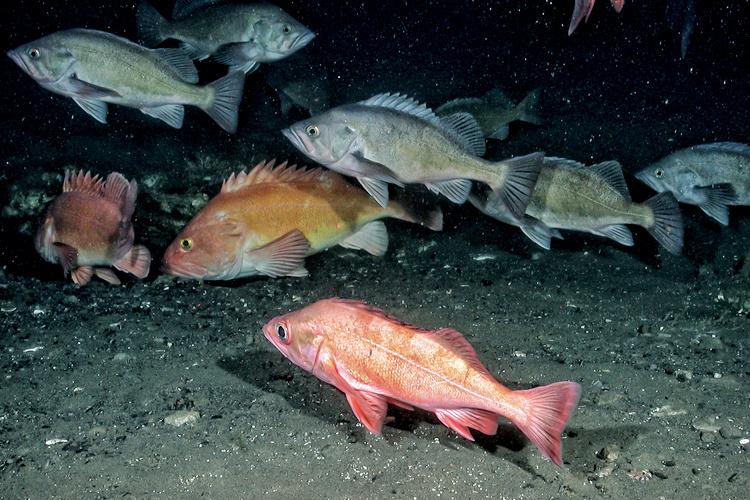Alaska has more than 50% of the U.S. coastline and leads the Nation in fish habitat area and value of fish harvested, yet large gaps exist in our knowledge of Essential Fish Habitat (EFH) in Alaska.
We are required under federal law to identify EFH for all Alaska federally managed fish species. To address this mandate, annual funding for EFH research supports the priorities of the EFH implementation plan.
The North Pacific Fishery Management Council requires a five-year review of the impacts of human activity, particularly fishing, on EFH. The five-year review was completed in 2017. Also at this time a new approach for habitat research was adopted with an updated EFH implementation plan.
The new approach is focused on integrating lab, field, and modeling studies of EFH. The purpose is to elevate EFH information for Alaska fish and crab species from Level 1 (distribution) and Level 2 (habitat-related densities) to Level 3 (habitat-related growth, reproductive, or survival rates). An example product is a map of growth potential for sablefish covering the Gulf of Alaska.
Integrated EFH studies now are possible because Alaska Fisheries Science Center scientists recently made a big advance; analyses incorporated some environmental influences on species distributions, which were applied to refine the EFH maps. These maps provide EFH Level 2 information (habitat-related densities) for the juvenile and adult life stages for most federally-managed fish species and EFH Level 1 information (distribution) for the remaining federally-managed fish species in the Gulf of Alaska, Aleutian Islands, and eastern Bering Sea.
Research Objectives for the Next 5 Years
- Develop EFH Level 1 information (distribution) for life stages and areas where missing.
- Raise EFH level from Level 1 or 2 (habitat-related densities) to Level 3 (habitat-related growth, reproduction, or survival rates).
With refined EFH maps we will be able to make more informed management decisions to better sustain commercially important fish stocks.


